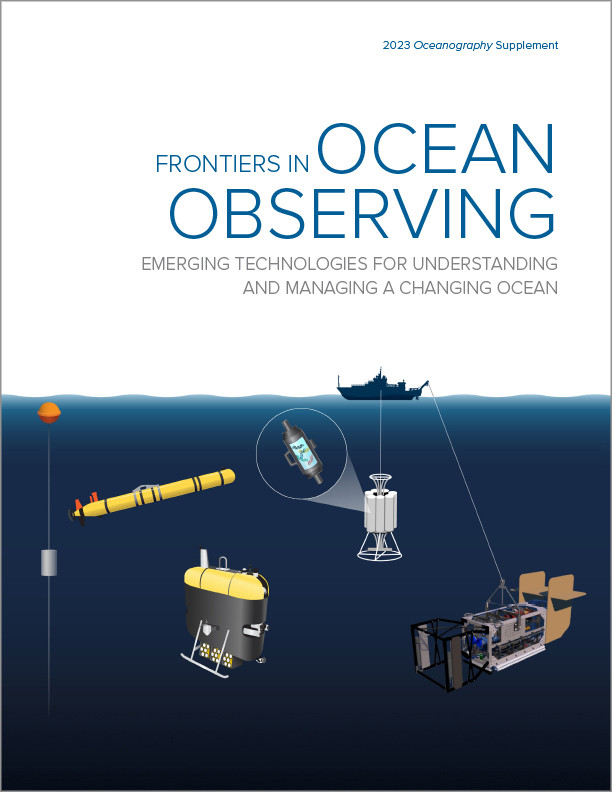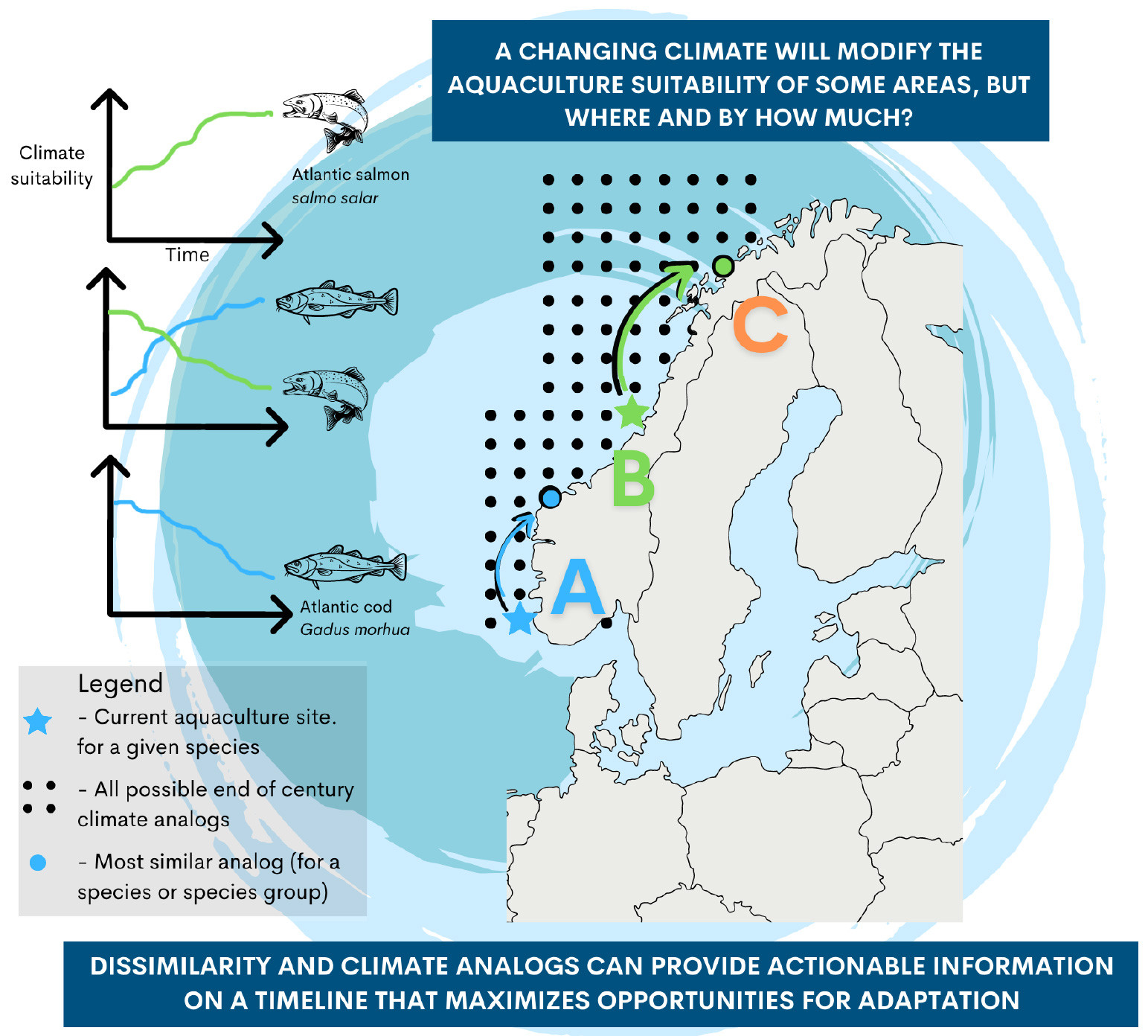Full Text
Introduction
Aquaculture has become the primary supplier of fish for human consumption, with production increasing every year since 1990 (FAO, 2020). At the same time, up to 89% of the world’s capture fisheries are fully exploited, overexploited, or collapsed. While some fisheries may have increased yields due to climate change in the short term, global fisheries catch is projected to fall by 10% by 2050 (Barange et al., 2014; Ramos Martins et al., 2021). However, the security of aquaculture production will depend on how future climate change affects productive regions as species’ optimal climatic conditions shift poleward (Chaudhary et al., 2021). This makes the forecasting of climate impacts on key aquaculture species a top priority in order to facilitate adaptation of this industry.
Simple climate metrics can provide valuable information on the potential impacts of climate change on biodiversity in the future. One such metric, climate velocity, uses an environmental variable, typically temperature, to track the rate and direction of climate change over time (Loarie et al., 2009). This approach can be scaled up to incorporate the dissimilarity in multiple biologically meaningful variables that define species’ fundamental niches, from today’s climate conditions to those projected under future scenarios of climate change. This enables the identification of the direction and distance a species must relocate to inhabit a climate that is analogous to its current conditions. Climate dissimilarity is a metric that drives the climate analog approach, which identifies other locations with similar climates to a current location across time and geographic space. Climate dissimilarities and their analogs can be determined with or without species distribution data by relying primarily on the selection (and data availability) of the environmental variables most relevant to a location, species, or group of species.
This paper aims to illustrate the potential of climate dissimilarity analyses for projecting future impacts on marine environments, specifically demonstrating how this approach may be used as a tool for managing aquaculture adaptations to climate change.
Climate Analogs in Action
In the wild, marine species are moving in pursuit of favorable environmental conditions (Chaudhary et al., 2021). However, aquaculture farms have less freedom, especially across country borders. This makes it important to identify areas where large climatic shifts are likely in order to mitigate losses and to seize emerging opportunities.
Determining where climate analogs favorable to aquaculture will be located under future climate change will enable advance planning of its development (Figure 1). For example, at location A, where example species Atlantic cod Gadus morhua is currently farmed, there may be a decrease in production of that species as the environment changes over time. Location B may develop an analogous climate that is similar to the present-day climate at location A. However, the climate suitability for an additional example species, the Atlantic salmon Salmo salar, could decline at location B over time, and salmon farms in this region would exhibit a loss in production should they keep farming Atlantic salmon. Location C, which is currently able to support Atlantic salmon aquaculture, although perhaps not at maximum production due to low temperatures, will be analogous to B in the future, resulting in increased production and profitability at that location in the future. However, decreased climate suitability may affect the aquaculture productivity in that region, negatively impacting the long-term profitability of these farms. As Figure 1 illustrates, current favorable climates will shift poleward, leaving polar and equatorial species subject to larger disruptions. Tropical regions already hosting the warmest environments may develop climates that are significantly dissimilar from a production perspective compared to the present day. Opportunities may arise as climate change could facilitate the expansion of tropical aquaculture into the subtropics and cold-temperate aquaculture into polar latitudes.
|
|
The reliance of aquaculture species and facilities on climate conditions creates a compelling case for proactive management and adaptation of aquaculture, which requires robust forecasts of climate impacts. To address this need, statistical approaches and metrics must be adaptable to diverse species groups and have regional resolution, while remaining applicable globally. Early identification of areas likely to undergo the biggest swings in aquaculture suitability, for the better or worse, is a critical step toward enabling the maximum adaptive potential of aquaculture as an industry.
Conclusion
Estimates of future climate dissimilarities may be a valuable approach for predicting optimal locations for aquaculture under different climate change scenarios. Future exposure to climate change could be estimated for large groups of species on a global scale using group-specific environmental variables with biological relevance, beyond temperature conditions, in order to improve the accuracy of projections (Ramos Martins et al., 2021). Knowing the distances and directions that aquaculture farms and native populations must travel to track favorable climatic conditions aids planning for the future, as recommended by the Intergovernmental Panel on Climate Change (Pörtner et al., 2022).
Several challenges and unanswered questions exist in the pursuit of accurate global aquaculture suitability models. Global distribution data that describe the native and introduced locations of aquaculture species are readily available, but the global distribution of aquaculture facilities is not. Engineering of aquaculture facilities, farm practices, and selective breeding may moderate the impacts of climatic changes and aid climate adaptation, but it may result in increased costs and decreasing profits, depending on local conditions and market prices.


